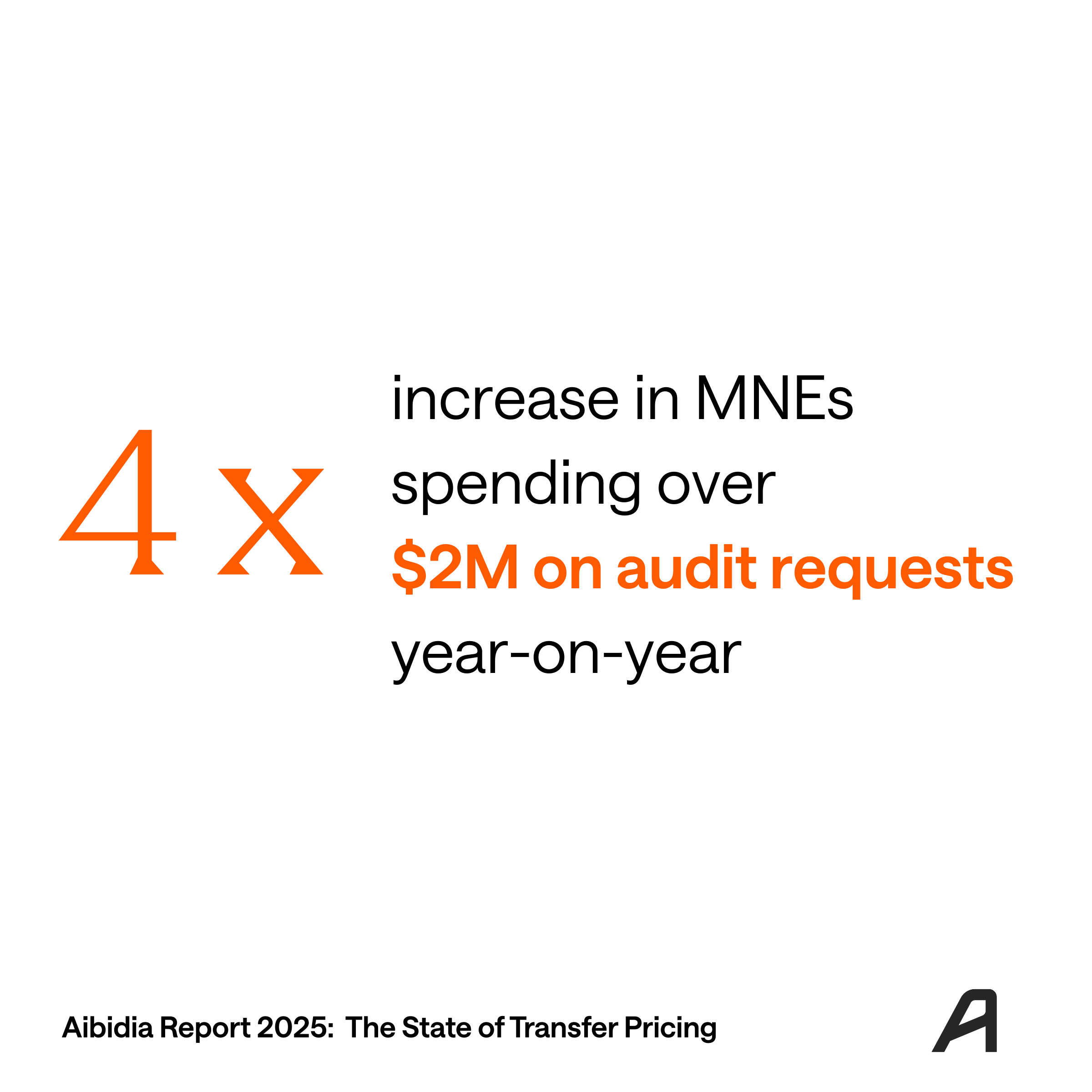-6.avif)
Transfer pricing is changing quickly due to technology advancements and a growing need for efficiency and tax compliance. In our recent webinar, "Transfer Pricing Technology Trends – Insights from Aibidia's 2024 Report," industry experts Ana Catarina Lopes Vieira from Remote, Lina Staugaite from MAN Energy Solutions, Igor Groenewegen-Mackintosh from Xebia, and Borys Ulanenko from ArmsLength AI shared their perspectives on the latest trends and challenges in transfer pricing technology.
This blog post summarizes the key takeaways from the session and highlights the top three trends shaping the future of transfer pricing.
1. Shift from Traditional Tools to Specialized Software
According to Aibidia's 2024 report, 46% of organizations are still using Microsoft Excel and Word for their transfer pricing processes. However, there is a clear trend towards adopting specialized software and automation tools to improve accuracy and efficiency.
One challenge in adopting comprehensive platforms is finding solutions that work for diverse tax regulations across multiple countries. Special software can meet specific regional needs and reduce manual errors, making it important in modern transfer pricing solutions.

While some companies develop in-house tools tailored to their unique needs, this approach has downsides. Building customized transfer pricing solutions can be time-consuming and resource-intensive, and it may take longer to achieve the desired functionality. In contrast, comprehensive platforms offer ready-made solutions that integrate seamlessly with existing systems, providing immediate benefits in terms of efficiency and tax compliance.
2. Enhanced Collaboration and Data Integration
Effective transfer pricing practices require seamless collaboration between tax, finance, and IT departments. Global tax rules are getting more complex. Organizations must now integrate their systems and processes more closely to keep up with real-time data requirements.
Centralized platforms play a critical role in managing deadlines, compliance, and data integrity across different regions. While traditional tools are still prevalent, there is a noticeable shift towards more integrated solutions that allow for better coordination and data sharing among teams.
Companies can reduce errors and maintain consistency in transfer pricing by centralizing data and using technology to automate collection and analysis. This means keeping all transfer pricing data in one place and using technology to automatically gather and analyze it. This approach helps companies avoid manual errors and ensures they apply transfer pricing methods consistently.

3. Increasing Adoption of AI and Large Language Models
Artificial Intelligence (AI) and large language models (LLMs) like ChatGPT are transforming various business functions, and transfer pricing is no exception. Despite the potential benefits, 48% of transfer pricing professionals do not expect to use AI in 2024. This indicates a significant opportunity for companies willing to explore AI-driven solutions.
Integrating AI into transfer pricing workflows can automate routine tasks, improve data analysis, and boost productivity. Educating employees about AI can improve work efficiency. It can also help tax professionals focus on important tasks. This, in turn, can enhance the overall transfer pricing function.
Key Takeaways/Next Actions
1. Evaluate Specialized Software: Assess how much you rely on traditional tools and consider using specialized software that meets your specific regional needs. Transitioning to these tools can significantly improve accuracy and reduce manual errors in your transfer pricing processes.
2. Invest in Comprehensive Platforms: Consider investing in comprehensive platforms that offer ready-to-use solutions for transfer pricing and tax areas. Look for integrated options that cover multiple areas at once when the time is right for your organization. These platforms can help you gain full control over your transfer pricing while reducing the risks and ensuring tax compliance, saving time and resources compared to developing in-house products.
3. Enhance Collaboration Across Departments: Focus on seamless collaboration between tax, finance, and IT departments. Implement centralized platforms for deadlines, compliance, and data integrity across different regions. This approach will ensure better coordination and data sharing among teams. This is not an easy goal, but focusing on it will ensure you are moving in the right direction.
4. Leverage AI for Routine Tasks: Integrate AI and large language models into your transfer pricing workflows. Focus on automating routine tasks and improving data analysis to boost productivity. Provide necessary training for your staff to use these tools effectively.
5. Educate and Train Employees on AI: Invest in training programs to educate employees about AI capabilities and how to leverage these tools effectively. Teaching your team about AI can help them work more efficiently and concentrate on key tasks. This, in turn, will enhance the effectiveness of your transfer pricing function. From drafting policies to preparing memos, modern AI can increase your team's productivity by 20-30%.
To explore these trends further and gain valuable insights from our experts, watch the full webinar recording and download Aibidia's 2024 report.

-6.png)




%20(2).png)



.png)

.png)
.png)






.svg)
